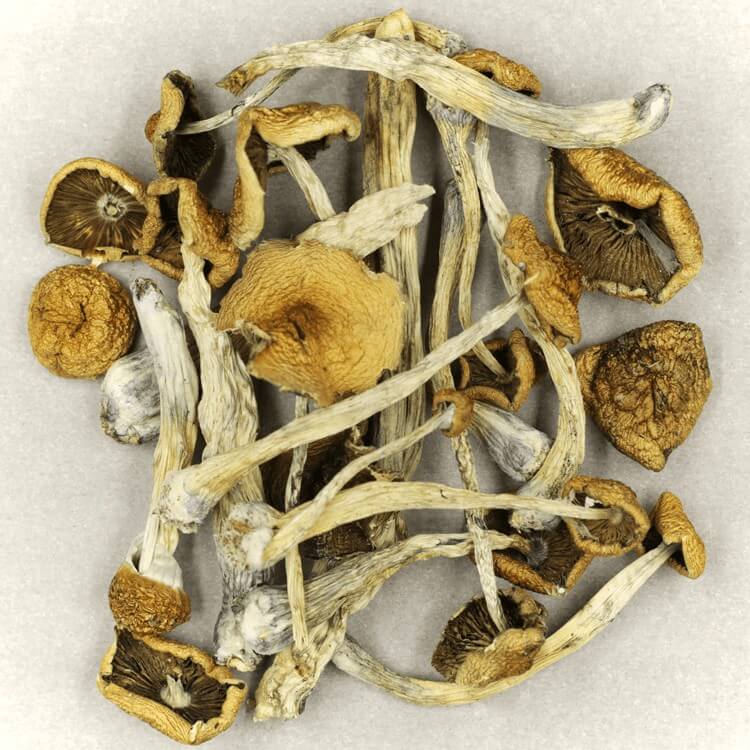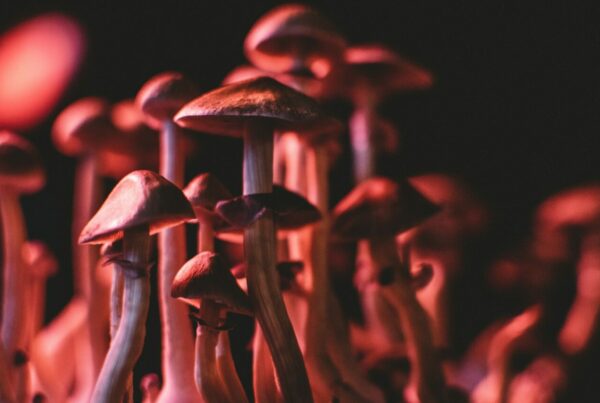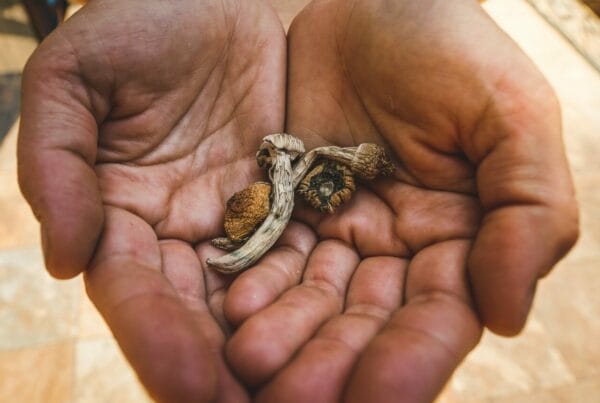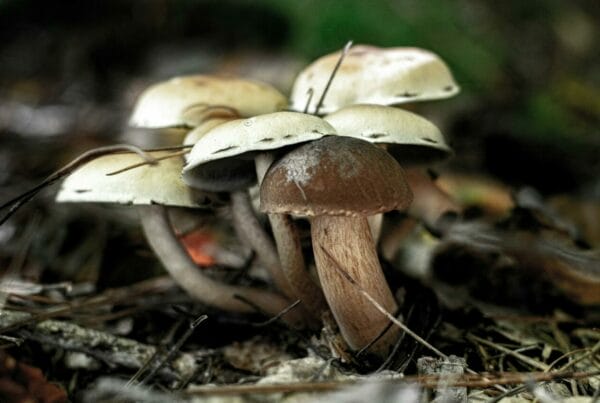Once thought to be mythical, the strength of Psilocybe mexicana is now recognized due to ongoing investigations into psilocybin. The psychedelic research community is consistently unearthing its therapeutic advantages, facilitating its gradual adoption in the medical realm. This burgeoning field is seen as promising by experts who are working tirelessly to determine safe dosage levels for medicinal usage.
Key Takeaways
- Modern techniques like liquid chromatography and tandem mass spectrometry are being utilized by scientists to gauge the potency of mushrooms.
- Psilocybe Mexicana, along with other mushroom varieties, is undergoing clinical trials to evaluate its potential therapeutic applications.
- Understanding the genetic diversity in magic mushrooms is crucial for formulating an accurate dosage guide.
Psychedelic Mushrooms: Transition from Mystery to Groundbreaking Research
In the past, only a few conditions were understood to benefit from Psilocybe Cubensis. However, today, psilocybin is making significant progress in revealing its concealed medicinal qualities.
Researchers are harnessing the potential of Psilocybe Mexicana and other potent strains for clinical trials and comprehensive research. Regardless of the subjects being in vivo or in vitro, this strain effectively illustrates the distinguishing effects and advantages of the fungus species.
Psychedelics’ Journey into the Marketplace
Once veiled in mystery, now disclosed—the continuous progress and discoveries are increasingly attracting public attention, especially those seeking therapeutic remedies. Conventional treatments for mental health disorders often fail to meet expectations, leading individuals to search for more effective alternatives.
Enter the realm of magic mushrooms.
Patients dealing with mental health concerns are resorting to psilocybin, displaying potential in alleviating conditions such as depression, alcohol dependency, anxiety, compulsion, chronic pain, and more.
Currently, medical professionals are exploring innovative ways to determine the ideal dosage for safe administration to patients. Notably, a group of researchers from the University of Texas has created a model to extract psilocybin and psilocin concentrations.
Establishing the potency of magic mushrooms in a clinical setting is achievable.
The Distinct Features of Mexicana
Golden Teachers, Blue Meanies, and B-Plus are among the magic mushrooms that have been extensively researched. However, to expand our knowledge of safe magic mushroom consumption, it’s imperative to investigate other species as well.
The Mexicana species has gained popularity in research circles not only because it is one of the oldest species but also because its relatively lower potency aligns more closely with medicinal drug standards.
Although this Mexican strain isn’t as potent as others, it can yield similar effects to more mainstream strains. As microdosing gains traction among patients, this strain becomes an increasingly appealing choice.
Like other strains, it boasts consistent levels of psilocybin and psilocin. So, what sets it apart from other comparable strains? Its historical and anthropological significance holds the answer.
Delving into a Rich “Mexican” Heritage
In bygone eras, psilocybe mexicana naturally proliferated in moss. These psilocybin mushrooms were held in high esteem by indigenous people due to their varied uses, often linked with mystical or supernatural occurrences.
Let’s focus on Mexican mushrooms. Over 2000 years ago, the earliest documented utilization of these mushrooms was by the natives of North and Central America. The Aztecs, an ancient ethnic group, referred to these mushrooms as the “food of the Gods,” or “teonanácatl” in their native tongue.
Were the Aztecs present today, they would attest to the transformative, emotionally profound, and mental stability-inducing effects of the Mexicana—despite the modern terminology being unfamiliar to them.
Despite the various cultivation methods employed, this mushroom has managed to retain its inherent psilocybin concentrations, a testament to its genuineness. This authenticity is a standard highly esteemed by researchers and institutions specializing in psychedelic research.
Innovative Techniques for Assessing Psilocybin Content and Potency
A team of ten researchers from the University of Texas at Arlington and other research institutions has devised a novel method for determining the potency of psychoactive compounds in mushrooms. This advanced methodology blends liquid chromatography with tandem mass spectrometry.
Here are two groundbreaking techniques:
- Liquid chromatography is a technique employed to segregate and examine chemical mixtures. It is utilized in this context to identify active chemicals in shrooms. The procedure necessitates the passage of a liquid sample through a column replete with a solid (the stationary phase). The diverse chemicals in the sample have various interactions with the stationary and mobile phases, leading to their separation at differing rates as they navigate the column.
- Spectrometry typically delves into the interaction between matter and electromagnetic radiation across a range of wavelengths. It pinpoints and quantifies substances through the unique wavelengths of light that molecules absorb and scatter. This method enables the identification of the electronic, vibrational, and rotational states of a chemical.
This methodology was employed on five different strains of magic mushroom. The researchers found that the average aggregate levels of psilocybin and psilocin across these strains ranged from 0.879 to 1.36. These concentrations exceeded those in several other strains, such as Bull Run and Cambodian. The researchers verified the accuracy of their study by comparing their findings with those obtained from other separate laboratories.
The agreement of results between the two labs further supported the validity of their test sequence in accurately determining the potency of the shrooms.
If it’s endorsed by experts, this could set the stage for a new suite of techniques in the existing psychedelic strength testing methods, serving as an extra safety precaution to prevent inaccurate dosage calculations.
Expanding Research to Additional Species
Extending research to other species has its advantages. It can deepen our comprehension of the health benefits tied to different strains and provide key data on the effects of less potent mushrooms.
Furthermore, it can contribute to educating individuals about the influence of dosage variations on the psychedelic experience. By contrasting Mexicans with stronger strains like Psilocybe Cubensis, researchers can establish how different concentrations of active compounds can affect therapeutic results.
As an example, the Blue Meanies strain yields more potent hallucinogenic effects, which could potentially be effective in addressing conditions such as depression. On the other hand, subtler applications such as mood enhancement or improvement in focus are more suitable for lower doses.
Genetic Diversity Leads to Safer Treatments
It’s not widely recognized that various cultivars or strains boast distinct genetic profiles and differ in their strength, composition, and effects. Understanding these variations allows healthcare practitioners to select the most suitable type for particular medical applications and adjust dosages to fit individual needs, thereby maximizing benefits and reducing risks.
Take for instance, Psilocybe Semilanceata (Liberty Caps) or Psilocybe cyanescens. They possess unique alkaloid profiles that may be effective for managing anxiety. On the other hand, other synthetically grown mushrooms may be better suited for addressing substance abuse or compulsive behaviors. Such diversity enables the development of individualized treatments with enhanced safety and efficacy.
From this, we can conclude that the genetic diversity in hallucinogenic mushrooms, coupled with innovative techniques for evaluating strength and identifying strains, is vital for devising safer medical treatments.
Enhanced Safety in Medical Use
Let’s ponder the potential impacts of safer dosage practices.
- Decreased risk of overdosing: Accurate dosing eliminates concerns about overdosing. It also suggests that product labels need to be more transparent to avoid consumer misunderstanding.
- Increased predictability: Users can better predict the effects or experiences they might encounter during their trips with more precise dosing. This can help reduce overwhelming sensations and anxiety, thereby enhancing patient satisfaction.
- Standardized measurement: Dosing accuracy can lead to a standardized metric, enabling people to refer to guides for potential effects more easily.
Experience the Advantages of Accurately-dosed Shrooms Through Advanced Potency Tests | Order Magic Mushrooms Online at Powerful Magic Mushrooms Canada
If these two revolutionary techniques continue, you won’t have to deal with unforeseen effects. Combine this with smart online shopping at Powerful Magic Mushrooms Canada. We offer dried mushrooms that provide a serene, relaxing psychedelic journey without excessive psychoactivity. Order psychedelics online in Canada via Powerful Magic Mushrooms Canada.
Frequently Asked Questions
Are Big Mexicans and Psilocybe Cubensis the same?
No, Big Mexicans and Psilocybe Cubensis are distinct mushroom strains, so it’s crucial not to confuse them. Big Mexicans have a higher compound isolation, ranging from 0.5% to 1%, making them significantly more potent than Psilocybe Cubensis. It’s important to note that their physical characteristics also vary: the former usually possesses a bell-shaped cap, whereas the latter’s cap is generally conical.
What constitutes the highest concentration in Mexican mushrooms?
Both psilocybin and psilocin, constituents of Mexican mushrooms, can reach a concentration of up to 0.25%. While these percentages might seem low and are comparable to the Golden Teacher strain, they can still induce profound psychedelic experiences that could potentially have health benefits.
What dosage is considered medically safe?
Generally, a safe dosage ranges from 1 to 2 grams. However, this can vary depending on factors such as method of consumption, individual metabolic rates, and the unique potency of the mushroom strain. Some individuals opt for sub-threshold doses between 0.05 (50mg) and 0.025 grams (250mg) to mitigate the hallucinogenic effects.





